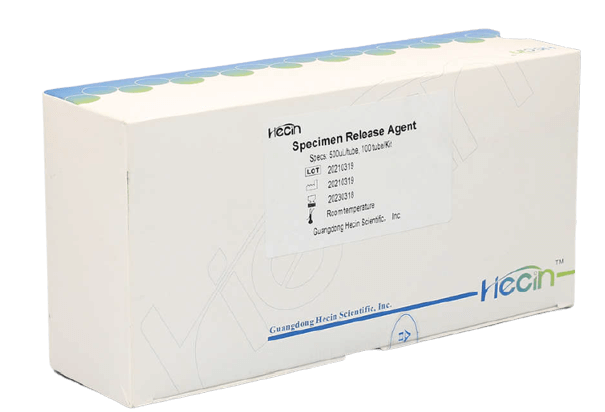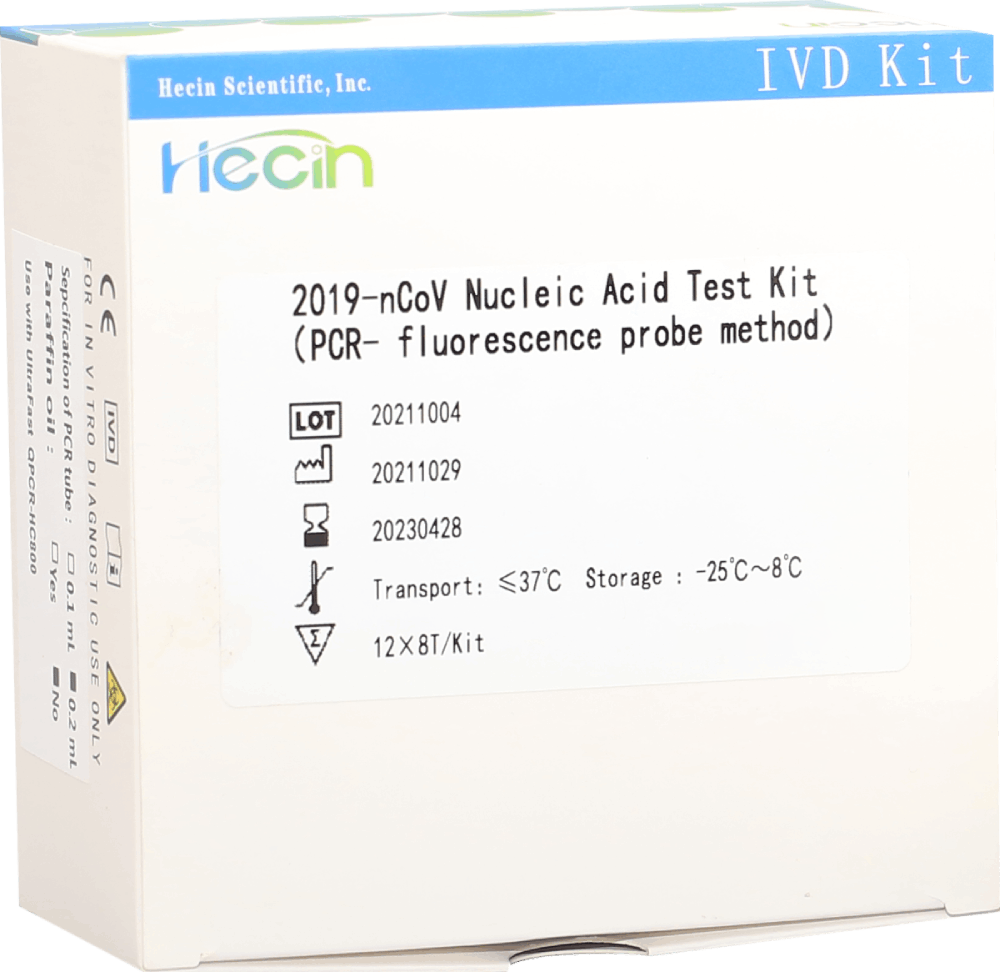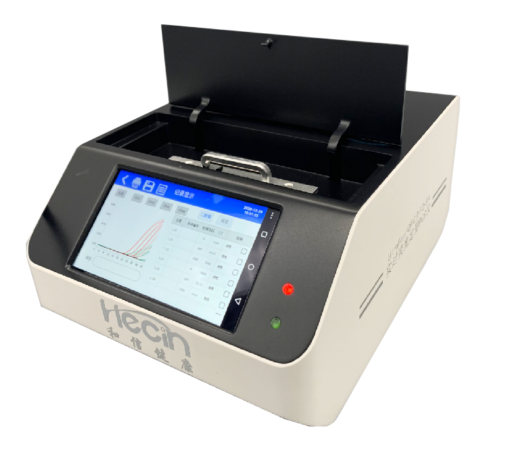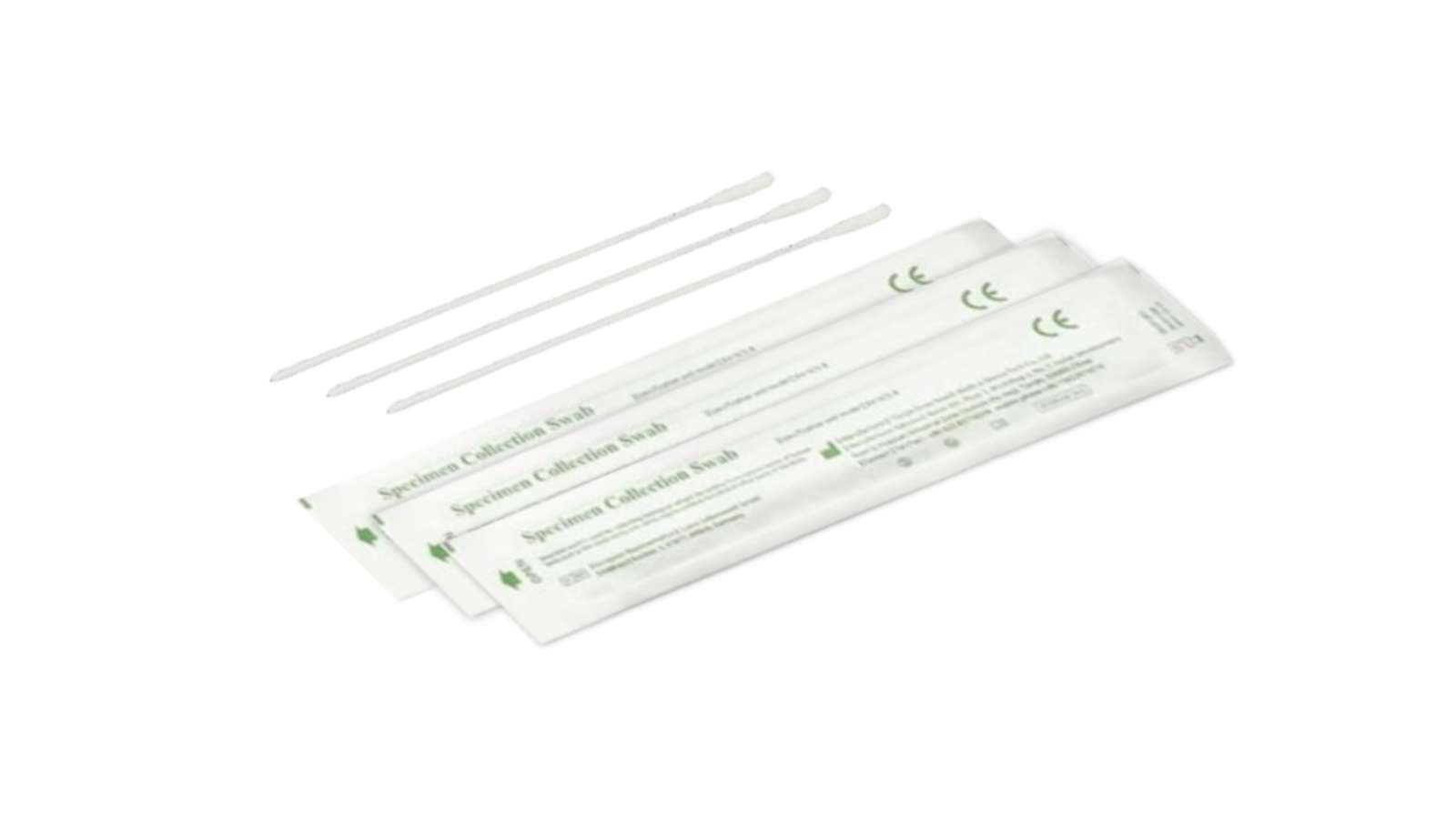Buy PCR Tests & Testing Equipment
At OdemShop, we offer high-quality PCR test devices and tests. They are the gold standard tool for detecting Covid-19, providing the highest accuracy.
PCR tests and PCR test devices - Everything you need to know
PCR tests and PCR test devices have become an integral part of everyday medical practice. They offer us the possibility to detect diseases at an early stage and to treat them effectively. But how exactly does it work? What is a PCR in principle? What components are included in a PCR test and what equipment is needed to perform it? In our article, we highlight everything you need to know about PCR tests and PCR test equipment.
Whether you are an expert or a novice in PCR testing, you will be well informed after reading our article. Join us now to discover everything about the exciting world of polymerase chain reaction diagnostics!
What is a PCR test?
PCR tests are molecular tests used to identify specific DNA sequences. The tests are commonly used to diagnose diseases such as HIV, hepatitis, and tuberculosis. PCR test instruments are devices used to perform PCR tests. They can analyze the DNA sequences in a sample material and display the results.
PCR tests and PCR test devices are an indispensable part of modern medical diagnostics. They allow qualitative detection of pathogens that may be responsible for infectious diseases. In Germany, these tests are approved by the Association of Statutory Health Insurance Physicians to ensure that patients receive only reliable results. In particular, PCR tests minimize false-negative results compared to older methods of infectious disease detection.
The latest generation PCR testing devices have the ability to test a large number of samples on one device simultaneously. Since these tests require thermal uniformity, it is important to choose the right PCR test instrument with the best possible quality. One of the features to consider when selecting a PCR test device is the White Transfer Cartridge (WTC). WTCs ensure optimal heating efficiency and thermal uniformity to produce safe and accurate results - especially at higher temperatures or slower paces than other tests were just acceptable. WTCs can even be used to achieve average heating at different ambient temperatures - avoiding the possibility of hot summer temperatures producing incorrect test results. Thus, WTC provides safety and accuracy for all types of PCR testing! With all this in mind, let's now move on to the operation of a PCR test device...
How PCR Test Device Works
A PCR tester uses a process called polymerase chain reaction (PCR). Simple operation allows this process to identify small amounts of DNA molecules (positive samples)and detect evidence of infectious disease. The test is performed in a laboratory and requires a special PCR test device to perform the PCR process. The test device contains a hot plate that heats the sample to break the DNA strands and detect the DNA fragments. It also contains a detector that measures the DNA fragments. Generally, a computer is used to interpret and analyze the results.
Many more modern PCR test instruments are equipped with more advanced features. They have a temperature controller that regulates the heating and cooling of the sample volume. Generally, the average heating temperature is about 95 °C, but some models can reach up to 105 °C. The recommended cooling temperature is in the range of 4-10 °C. In addition, some models offer more than just the basic programs and have specially designed programs for specific applications or laboratory conditions.
Here is a list of the main components and functions of a typical PCR test instrument:
- Temperature controller: controls the temperatures for heating and cooling the sample volume.
- Number of programs: Provides specialized programs for specific applications
- Average Heating & Cooling: Allows you to make the most of advanced thermostat technologies
- Recommended sample volume: Gives you an idea of the volume you need to obtain successful results
With the help of these elements, you can use technical expertise to work more precisely and deliver new research results - all in a safe environment! With innovative designs and powerful software, the potential of the PCR test system continues to rapidly increase - meaning PCR testing is considered the gold standard for providing accurate data results to support diagnostic decisions.
Polymerase chain reaction as gold standard
Have you ever heard of the polymerase chain reaction (PCR)? This technique has become an essential component in medical diagnostics and has proven to be the gold standard for the detection of many pathogens. PCR makes it possible to detect very small amounts of DNA or RNA from blood samples, tissue samples and other biological materials. This is done by multiplying the genetic material so that it can be detected using specialized tests.
By using PCR testing equipment, laboratories can improve their diagnostic workflow. The test itself is relatively simple: no special preparation of the sample material is required, which means more time is available for other tasks in the laboratory. Test accuracy and sensitivity are also higher than manual methods; thus, PCR tests provide reliable results with minimal resource input. With this knowledge in mind, PCRs are now taking on a key role in modern medical technology, providing efficient solutions to the challenges faced by modern healthcare facilities. With that, we now set out to learn more about POC NAT testing - what is it?
PoC NAT Testing - What is it?
It is important to understand what point-of-care NAT tests are and how they are used. PoC NAT tests (also known as nucleic acid detection tests) can help monitor and diagnose the spread of disease. They allow rapid results to be provided directly on-site at medical facilities or laboratories. These tests consist of several steps: First, the sample material must be collected and prepared; then, the DNA strand is analyzed using specific detection techniques; finally, the result is interpreted. PoC NAT testing can identify a variety of different pathogens, including bacteria, viruses, fungi, and parasites. In this way, such tests help both healthcare and other sectors to detect infectious diseases at an early stage and provide adequate treatment options. As a result, they now play a very important role in our fight against pandemics and epidemics worldwide. For example, PCR-based diagnostic tests can be performed more effectively to provide highly accurate clarification of findings so that patients can be treated or therapized more quickly. The combination of the high accuracy of the PCR method with the rapidity of PoC NAT tests makes a decisive contribution to the timely detection of the spread of infectious pathogens and the initiation of preventive measures. With that, let's now move on to discussing the real-time PCR setup and how it works!
Real-Time PCR System - Structure and Functionality
"Necessity is the mother of invention", an old saying that is nowhere more true than in the world of Real Time PCR. In this method, the result of PCR tests is measured and recorded in real time. This makes it ideal for laboratories that need fast results.
The operation of Real Time PCR instrument is based on the Polymerase Chain Reaction (PCR) process. This uses a special fluorescent dye molecule to measure and display changes in the quantum spectrum of the molecule. Thanks to its ability to derive quantitative data directly from the primer pair, it allows us to obtain more accurate information about the status of a pattern than, for example, traditional nucleic acid amplification methods. It saves time and money while greatly simplifying laboratory processes.
Real Time PCR is therefore an extremely versatile tool with a wide range of applications - from diagnostic testing to biotechnological research - making it an indispensable tool both in the workplace and in medical environments. With innovative techniques, PCR can be used to achieve even more and continue to deliver significant results. Thus, we conclude the section on Real Time PCR - Setup and Functionality and now gently transition to the topic of Alternatives to PCR Tests and Testing Devices.
Alternatives to PCR tests and PCR test devices
Alternatives to PCR tests and PCR test devices include rapid tests that target antibodies to coronavirus. Other options include antigen tests that respond to the presence of SARS-CoV-2, the virus that causes COVID-19. Some tests require a blood sample, while others require only a nasal swab sample. Another option is to use LAMP tests, which are based on the nucleic acid amplification procedure.
There are also alternative methods to determine nucleic acid sequences in a sample. One of these methods is hybridization PCR or HPCR. In HPCR, the target sequence is labeled with special fluorescent dye markers and then immobilized on a microchip. By comparing the molecular weight between the marker and the target sequence, analyses can be performed without replicating DNA. Ligation-based PCR (LPCR) is another technique that increases the specificity of the analysis by using multiple primer molecules. However, both techniques have their limitations, as they are not as effective at quantitative measurement as real-time PCR.
Digital polymerase chain reaction (dPCR) is another option for molecular diagnostics. This technique has the advantage of providing very accurate results - usually to single-molecule precision.Due to its high accuracy, it offers particularly great advantages in the medical field, especially when testing for pathogens and viral infectious diseases.
Areas of application for PCR tests and test equipment:
PCR testing can be used in a variety of medical applications, including diagnosis of infectious diseases, detection of genetic mutations, and detection of viruses and bacteria. PCR test instruments can be used to analyze a range of samples quickly and easily. They are used in laboratories, hospitals and other medical facilities to obtain fast and accurate results. They can also be used to diagnose diseases and monitor treatment results.
Laboratory equipment for performing PCR tests and testing devices:
- A PCR testing device to extract and amplify DNA samples.
- Appropriate pipettes to extract and pipette samples.
- Reagents for PCR amplification.
- A microwave oven to complete DNA amplification.
- A spectrophotometer to measure DNA concentration.
- A heat block to control the reaction temperature.
- Microplates to store the PCR amplification products.
- A photodocumentation device to document the results of PCR amplification.
- A computer with dedicated PCR software to analyze the results.
Equipping a laboratory to perform PCR testing is critical to ensure that all necessary steps are followed. A well-equipped lab makes it possible to obtain reliable results - so it is possible to check with certainty whether someone is suffering from a particular virus or bacterium. To ensure this, the laboratory must be equipped with the right technical devices and materials. This includes specially designed reagents and enzymes, spectrophotometers, thermocyclers, pipetting robots and other computerized systems. It is also important to have qualified personnel on site to collect samples and accurately interpret test results. With all these elements in place, one ensures that each patient receives the quality medical care they need.
Shelf life of PCR test results
The shelf life of PCR test and assay results depends on many factors, including the processing and storage of the test. If the samples are not processed properly, the PCR reaction cannot be performed correctly and the results may be inaccurate. Therefore, it is important that the tests and test equipment are used and stored properly to obtain the best possible results.
Conclusion PCR test and PCR test devices
In summary, PCR tests and test devices provide an effective way to diagnose infectious diseases. They are sensitive and specific, which makes them very accurate compared to other testing methods. Although more expensive than alternatives, they provide rapid results and require only small sample volumes for multiple tests at once. It is important to use proper technique when performing the tests to avoid false positive or negative results. In addition, if PCR is not available, there are several alternative options such as antibody tests, rapid antigen tests, blood tests, and urine tests that can be performed either at home or in an on-site mobile laboratory.
Here you will find our main categories:
Frequently asked questions
What is a PCR test?
A PCR test is a medical test used to detect the presence of DNA or RNA from infectious agents such as SARS-CoV-2 coronavirus. The test is based on the polymerase chain reaction (PCR), which allows small amounts of DNA or RNA to be amplified for detection.
How does a PCR test work?
A PCR test uses a sample, typically consisting of a nasal or throat swab. The sample is then placed in a PCR machine, where it is treated with special enzymes and reagents to amplify the presence of viral RNA. If the viral RNA is present in the sample, it is detected by the PCR process.
How quickly does a PCR test provide results?
PCR tests typically provide results within 24-48 hours, depending on how quickly the sample gets to the lab and how busy the lab is.
How accurate are PCR tests?
PCR tests are usually very accurate when performed correctly. However, accuracy also depends on the quality of the sample and the stage of infection.
What type of samples can be used for PCR testing?
PCR tests can use different types of samples, such as nasal or throat swabs, saliva, blood, or stool.
What is a PCR test device?
A PCR instrument is a medical device used to perform PCR tests. It contains special enzymes and reagents to amplify the presence of viral RNA in a sample.
How do PCR test devices differ from each other?
PCR instruments can differ in size, capacity, and functions. Some PCR devices are designed for use in laboratories, while others are portable devices for use in the field.
How important are PCR tests in the fight against the COVID-19 pandemic?
PCR testing is an important part of combating the COVID-19 pandemic because it allows for early detection and isolation of infections. PCR testing is also important for infection surveillance and vaccine and drug development.
How are PCR tests performed?
PCR tests are performed by trained medical personnel. A sample is collected and placed in a PCR machine, where it is treated with special enzymes and reagents to amplify the presence of viral RNA.
Where can PCR tests be performed?
PCR testing can be performed at a variety of providers, including doctors' offices, hospitals, testing centers, or laboratories. However, the availability of tests may vary by region and country.





